Semén Aizenshtein, the forgotten pioneer of national radio technology
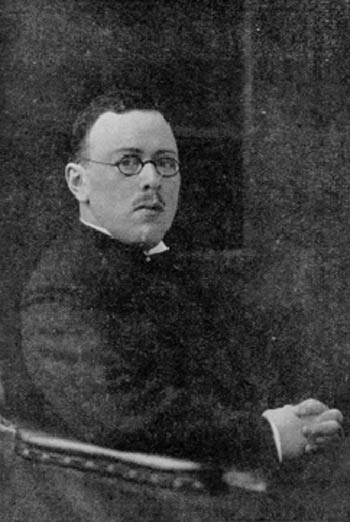
In his native land Aizenshtein’s name was consigned to oblivion, despite the fact that after Popov’s death in 1906 he became his spiritual successor and the most prominent national figure in the field of radio engineering.
On 7 May 1895, the functioning of a “wireless telegraph” at a distance of 60 m was publicly demonstrated for the first time in Russia by Alexander Popov, a lecturer of Mine Officer courses in Kronstadt, the base of the Russian [Baltic] Fleet. Later, with the aid of sensitive telephone headphones, the reception range was extended to five kilometers.
In 1900 the first radio stations of Popov’s system appeared on ships of the Russian fleet, and the range of communication reached 150 km. In the Soviet Union the professional holiday known as “Radio Day” was celebrated every year on 7 May.
Meanwhile, in the West, the inventors of the radio are considered to be the Serbian-American Nikola Tesla, who apparently received radio signals from Mars, and the Italian Guglielmo Marconi, Marquis of Marconi, who founded the first radio engineering company in Great Britain. In 1901 Marconi was able to transmit a signal across the Atlantic Ocean for the first time, and in 1909 he was awarded the Nobel Prize.
A milestone in the development of electronics was the year 1906, when radio tubes, which became the foundation of radio equipment for a long period of time, were invented. Almost simultaneously a crystal detector was patented, which made it possible to separate the signal from the carrier radio frequency, the first semiconductors that subsequently replaced radio tubes.
That same year live music, the reading of poems, and a short conversation were broadcast. This was the first attempt at radio broadcasting, with its two main components: information and entertainment.
It was only radio operators at naval radio stations who accidentally picked up the voices and music through their headphones, which were heard amidst the usual squeaking of the Morse code. Mass production of inexpensive receivers began only a few years later.
Down Music Lane
On 25 January 1884 the future talented scientist, engineer, and entrepreneur who became one of the world’s top creators of radio technology was born into the family of a Kyivan merchant of the First Guild. Eventually, our countryman, Semén Moiseiovych Aizenshtein, Chevalier of the French Legion of Honor, achieved recognition and respect in many countries.
However, it is fruitless to look for information about him in encyclopedias and dictionaries published during the Soviet period, because he immigrated to the West in 1922, together with a number of other prominent figures. In his homeland, his name was consigned to oblivion despite the fact that after Popov’s death in 1906, he became his spiritual successor and the most prominent national figure in the field of radio engineering.
He also founded the St. Petersburg-based Society of Wireless Telegraphs and Telephones, the starting-point of the history of the famous Vektor Scientific Research Institute and was also the developer and designer of most of the electronic structures in Russia in the years 1907–1922.
The Aizenshtein family settled in Kyiv’s famous cultural center, Muzychny provulok (Music Lane), most likely in a large apartment building built around 1900 by Władysław Horodecki, on the corner of Prorizna Street and Khreshchatyk Boulevard. The telegraph and telephone station was next door, and the young man’s attention was undoubtedly attracted by both the telegraph operators and the young ladies working the telephone switchboard.
After enrolling at St. Volodymyr Kyiv University, Aizenshtein became fascinated with Popov’s work in the field of wireless telegraphy. At home, he set up an experimental radio station consisting of a spark-gap transmitter and receiver and carried out the first radio communication sessions in Kyiv.
In 1901 he spent time in Moscow, visiting the Polytechnical Museum and attending the 2nd All-Russian Electrotechnical Congress. There, the 17-year-old Kyivan student was introduced to Popov, who was amazed by the breadth of his scientific views and creative approach.
This encounter inspired Aizenshtein, and soon afterwards he obtained his first patent. Thanks to his abilities and financial support from his father, after graduating from Kyiv University, he continued his studies at the University of Berlin and the Technische Hochschule Charlottenburg. After returning to Kyiv, in 1905 he set up a wireless telegraphy laboratory.
[Vladimir] Sukhomlinov, the Governor General of Kyiv and future Minister of War of Russia (1909–1915), became interested in these experiments, and acquired funding for them from the Military Department, as well as land allocated in Kyiv and Zhmerynka for the construction of powerful experimental radio installations.
Meanwhile, Aizenshtein was already testing mobile field radio stations. His next patent attested to the pioneering nature of his work. The newspaper Kievskaia mysl [Kyivan Thought] wrote on 23 (10) February 1907:
“On February 1 and 2 the Kyiv wireless telegraph station transmitted telegrams to Odesa over a distance of 410 versts. The signal strength showed that this is still not the maximum distance at which the station can transmit its signals.
The Kyiv station can transmit telegrams over a distance of about seven hundred versts by land, which corresponds to the distance by sea of around two thousand versts. The station was built by S. M. Aizenshtein in order to test the proposed system. During experiments in Odesa we managed to receive simultaneous telegrams from Kyiv and Zhmerynka, where there is also a station built according to S. M. Aizenshtein’s system.
The Odesa station, built for communicating with Sevastopol (a distance of about three hundred versts by sea), could not respond to the Kyiv telegram, owing to the weak devices. Now the transmitting device in Odesa is being strengthened, and it is expected that two-way transmission will be established soon.”
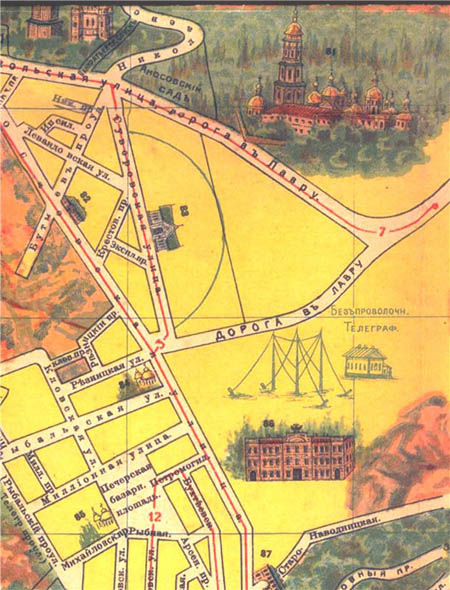
The All-Russian Electrotechnical Congress in Kyiv
Aizenshtein presented the results of his research on radio communication at the Fourth All-Russian Electrotechnical Congress in Kyiv, held from 25 April to 4 May 1907. The gathering, convened in the hall of the Municipal Duma, began with a fiery speech delivered by the chairman and municipal head Ipolit Diakov, who welcomed the congress participants in the name of the city of Kyiv.
Among other things, he said: “The branch of knowledge to whose development you have devoted your life is attractive not only from a purely scientific standpoint and fascination that are elicited by the victories of human genius over the forces of nature and the new steps on the path to fathoming its secrets, but also by the fact that the purely practical findings produced by these discoveries make our ordinary life more beautiful, more attractive, and more convenient.”
The congress was then greeted by representatives of state and educational institutions, scholarly societies, and civic organizations. In his speech, the professor of physics Georgy De Metz declared in the name of the Kyiv branch of the Imperial Russian Technical Society: “After the capitals of Moscow and [St.] Petersburg, the first provincial city in which the congress is conducting its activities is Kyiv. It is precisely here that electricity acquired the broad rights of citizenship: Alternating current lights streets and buildings; direct current transports [us] by the urban train [as the streetcar was known at the time—V.L.].
We have a substantial telephone network; plumbing works with the aid of electricity. We have a wireless telegraph station, which communicates over a distance of 230 versts with Zhmerynka, and over 410 versts with Odesa. In addition, the first state-owned telephone network with a station, the largest of the state installations in the empire, has been installed in Kyiv. And much more needs to be done to improve human existence.”
In the evening, the Kyiv municipal government held a reception for the participants of the congress in the hall of the Municipal Duma. The lavish spread, accompanied by music performed by a military orchestra, was also attended by members of the city council. The mayor raised a toast to the fruitful work of the congress.
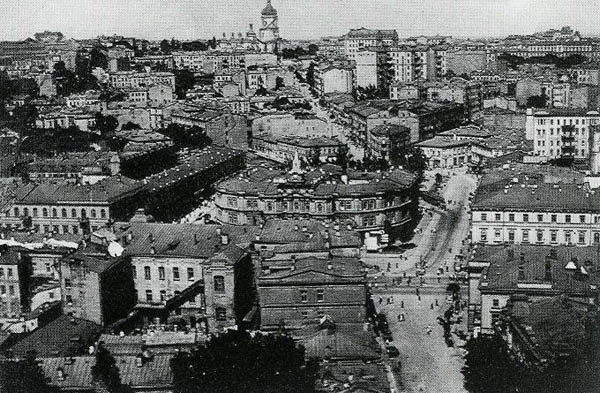
Sessions continued by section. On 29 April, Aizenshtein delivered a paper at St. Volodymyr University in the section “The Technology of Weak Currents.” His research garnered recognition and support at the congress and brought him popularity.
Maelstrom of Activities
The scientist continued his work with inspiration. The construction of radio stations in Kyiv and Zhmerynka, at the time the most powerful in Russia, was completed the following year. The Military Department later purchased these stations for seventy thousand rubles.
In 1907 the Military Department proposed that Eisenstein, who already owned about twenty patents, move to St. Petersburg to expand the production of domestic radio equipment.
The Society for Wireless Telegraphy and Eisensteinian System of Telephones was founded. Administrative and factory buildings, which have survived to the present time and continue to serve as developers of radio equipment, were constructed.
In 1910 the society was restructured as the Russian Society of Wireless Telegraphy and Telephones Joint Stock Company (ROBTiT). The board with twenty percent of the shares also included Nobel laureate Marconi, who had his own company in Russia.
That year marked the successful field testing of military radio stations designed by ROBTiT and Siemens & Halske, which replaced the army’s outdated Marconi and Telefunken designs.
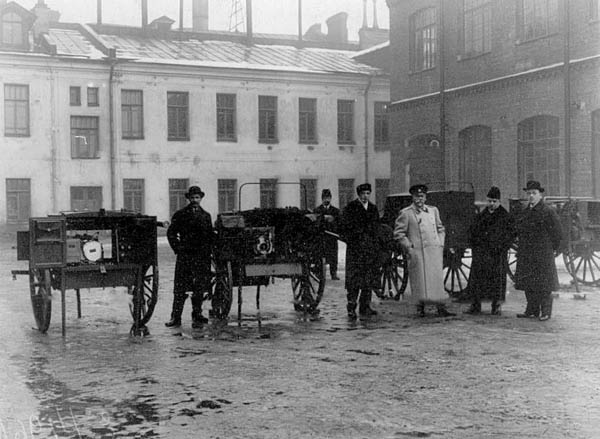
From 1908 to 1913 Aizenshtein's laboratory, together with the German company Telefunken and the General Wireless Telegraphy Company of France, investigated the possibilities of radiotelephone communication in the Navy. In 1910 Aizenshtein built an arc radio station in Sevastopol, in place of the signal mast station created by Popov in 1904.
Before the Second World War, the firm developed and later launched the production of more sophisticated radio stations as well as “electronic relays”—tubes—and set up the mass production of tube equipment.
In 1914 Eisenstein was the first in Russia to establish a radio telephone connection using tube transmitters with several watts of power over a distance of 25 km between St. Petersburg and Tsarskoe Selo.
On the basis of Aizenshtein’s designs, ROBTiT built the most powerful signal radio stations in Europe: the Khodynka in Moscow and one in Tsarskoe Selo, each using 300 kW of power, to communicate with the Entente Powers. France awarded Aizenshtein the medal of the Legion of Honor and granted him the status of a French subject.
For signals intelligence, the production of radio direction finders, which helped determine the location of enemy headquarters, was set up in 1916; this was the beginning of electronic warfare.
By the middle of the war the army and the navy, up to the company level, already had radio communication devices, thanks in no small part to Aizenshtein. In St. Petersburg he founded and became the editor of Russia’s first radio engineering magazine, the Wireless Telegraphy Herald.
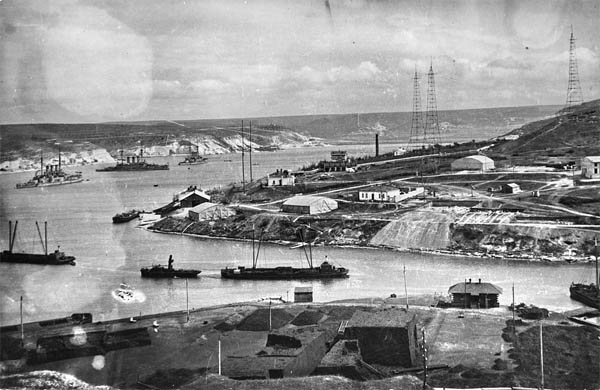
After the Bolshevik coup, the ROBTiT factory was nationalized and preserved. Aizenshtein had no choice but to curb his creative entrepreneurial nature and focus on scientific work.
In 1918 a government meeting took place at the Nizhny Novgorod laboratory, during which Aizenshtein was appointed scientific specialist at the Higher Radio Engineering Council responsible for setting up a radio network in the Soviet republic, particularly communications between Moscow and Vladivostok.
Delivering numerous reports and publishing articles in radio magazines, Aizenshtein did much to promote radio. In 1920 the first Soviet broadcasting station went out on the air in Nizhny Novgorod. Soon there was a second one, in Moscow, using twelve kW of power, and its signal was received even in Germany.
In 1924 the first Ukrainian broadcasting station was launched in Kharkiv. The Soviet press encouraged enthusiasts to engage in the artisanal production of improvised radios.
Despite all the turbulence in his life, Aizenshtein conducted research work on radio communications for the Trans-Siberian Railway, attended conferences, and was one of the directors of the construction of a radio station with a capacity of one hundred kW on Shabolovka Street in Moscow.
However, as time went on, he was increasingly beset by troubles. In February 1921 Chekists accused him of sabotaging an urgent government order.

In June 1921 an accident happened on the construction site of the Shabolovka tower. As it was being lifted to a height of 75 m, its fourth section fell, damaging the lower structures.
Aizenshtein, as one of the heads of the construction, was accused of criminal conduct in the workplace.
Failing to uncover any evidence of sabotage, the Cheka halted its investigation of the outstanding radio engineer, noting that, thanks to his designs, all the powerful radio stations in the European part of the state had been built.
In 1922 the People’s Commissariat for Posts and Telegraphs wrote in its circular:
“During the construction of the tower for the Moscow Shabolovka radio station during the years 1919–1922, the construction workers, despite irregularly received rations and clothing, zealously executed and brought to a conclusion the work entrusted to them, being aware of the exceptional importance of the construction, even in difficult moments, being completely hungry and poorly clothed and, despite the human losses that were incurred during the collapse of the tower, these workers were inspired by their small organization and remained steadfastly on duty...”
The Soviet way of life turned out to be unacceptable for this individual with the broad potential of an entrepreneur and scientist. Since he had French citizenship, in the early 1920s Aizenshtein decided to immigrate to Great Britain, to his former friend and ROBTiT colleague, Marconi. He left illegally via Riga.
Later, Aizenshtein oversaw the construction of radio engineering plants in Poland (1922–1935) and Czechoslovakia. During the Second World War, he worked in Great Britain, at the electro-vacuum laboratory of the Marconi Company. After the war, he founded his own firm, the English Electric Valve Company Limited, which he headed until 1955 when he retired. Our distinguished countryman’s heart stopped on 3 September 1962, when he was 78.
In 1951 the building housing the State Television and Radio-Broadcasting building and Kyiv Television Center, the third-largest in the Soviet Union, was erected on the site of Music Lane, which was completely burned down by members of the Soviet underground.
It would be appropriate to honor Aizenshtein’s memory with a commemorative plaque near the place where he lived. To this day his Kyivan relatives are afraid to mention this “traitor of the proletarian homeland.” It is crucial that respect for the glorious past inspire people to new achievements.
Sources:
- Borisov, V., “Utrachennyi potentsial: Emigratsiia deiatelei nauki i vysshei shkoly Moskvy posle 1917 g.,” in Moskva nauchnaia, Moscow, 1997, pp. 416–33.
- Borisov, V. et al., “Rossiiskie uchenye i inzhenery-emigranty (1920–50-е gody),” website of the Institute of the History of Natural History and Technology, Russian Academy of Sciences.
- Husachenko, I., “Stolittia radiomovlennia,” Dzerkalo tyzhnia, 13 May 2006, № 18 (597)..
- Kalnitskii, M., Den′ radio i den′ Radiofizyka.
- Melnik, V. (Donetsk) and Kondakov, D. (Moscow), Letopis′ otechestvennoi radiotekhniki i radioveshchaniia.
- Pestrikov, V., “Prodolzhatel′ dela A. Popova—drug G. Markoni,” Radiokhobbi, № 4, pp. 2–3.
- Virtual Computer Museum
13 November 2016
Valerii Lysenko
Istorychna Pravda’s ‘Shalom!’ media project, which explores the Ukrainian-Jewish dialogue, is made possible by the Canadian non-profit organization Ukrainian Jewish Encounter.
Originally appeared in Ukrainian @ Istorychna Pravda
Translated from the Ukrainian and the Russian by Marta D. Olynyk.
Edited by Peter Bejger.
NOTE: UJE does not necessarily endorse opinions expressed in articles and other materials published on its website and social media pages. Such materials are posted to promote discussion related to Ukrainian-Jewish interactions and relations. The website and social media pages will be places of information that reflect varied viewpoints.




















